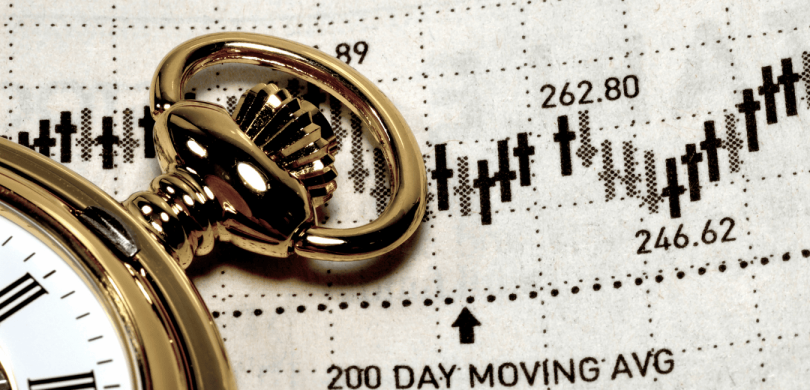When it comes to investment strategies, the debate between buy-and-hold and market timing is as old as the markets themselves. As an active trader, understanding the strengths and weaknesses of these approaches is crucial, especially when considering how to allocate capital or how to react to market conditions.
Buy-and-Hold: The Long-Term Commitment
The buy-and-hold strategy revolves around purchasing investments and holding onto them for an extended period, regardless of market fluctuations. It’s a cornerstone of passive investing and aligns with the belief that markets grow over time despite short-term volatility.
Advantages:
- Simplicity: Minimal decision-making and reduced stress from daily market moves.
- Tax Efficiency: Fewer transactions mean lower capital gains taxes.
- Cost Savings: Lower trading costs due to fewer trades.
- Compounding Benefits: Time in the market allows for reinvested earnings to compound significantly.
Challenges for Active Traders:
- Opportunity Cost: An active trader sees opportunities in short-term market swings that a buy-and-hold investor might miss.
- Risk of Drawdowns: Major market downturns can severely impact portfolio value, requiring patience and discipline to hold through recovery.
- Lack of Flexibility: In dynamic markets, sticking to buy-and-hold may feel too rigid for traders attuned to shifting trends.
Market Timing: The Tactical Play
Market timing involves actively buying and selling investments based on predictions of market movements. This approach appeals to traders who thrive on identifying trends, patterns, and opportunities in the short term.
Advantages:
- Potential for Higher Returns: Well-timed trades can outperform the broader market.
- Risk Management: Active traders can exit positions to avoid major downturns.
- Flexibility: Allows traders to capitalize on both bull and bear markets.
Challenges:
- Execution Risk: Timing the market accurately is exceptionally difficult, even for seasoned traders.
- Higher Costs: Frequent trading incurs transaction fees and potentially higher taxes.
- Emotional Stress: Constant monitoring and decision-making can be psychologically taxing.
FTSE 100 Goes Nowhere!
The following chart shows how the FTSE 100 index has gone nowhere in this time period. The passive buy-and-hold investor would have ended up with exactly the same money that he started with… plus dividends, admittedly, but minus inflation.
The next chart shows how an expert market timing investor could have made a substantial profit over the same period, roughly corresponding with the red line. He was clever enough to have sold out and gone to cash perfectly at each peak, and then to re-invest perfectly at each trough.
For some ideological reason, those people practicing the noble art of ‘investing’ don’t like to think of themselves as ‘traders’ who dip in and out. But this is hardly day-trading, is it? The market timing investor would have made only six transactions in thirteen years.
Looks easy, doesn’t it? And with the benefit of perfect hindsight, it is.
In practice it’s rather more difficult to determine the exact tops and bottoms because — as we all know — nobody rings a bell. Yet the market timing aficionado would argue that you only needed to get your timing roughly right in order to have bettered the buy-and-holder.
The other problem is that this is rather like trying to measure the coastline of Great Britain. The smaller your measuring stick, the greater the distance (or profit) as you take in more twists and turns. But more frequent trading means higher frictional costs (like the spread) and more opportunities for the market to whipsaw you out for a long series of cumulative losses.
So now let me summarise:
Market timing is possible, and profitable, but it isn’t easy.
An Active Trader’s Perspective
For an active trader, the choice between buy-and-hold and market timing isn’t binary—it’s situational. Here’s how traders might approach the debate:
- Blending Strategies: Many traders allocate a portion of their portfolio to buy-and-hold for long-term growth while using the rest for active trades. For example, they might hold ETFs or blue-chip stocks while actively trading forex or commodities.
- Risk Management: Active traders can use market timing to hedge risks in a buy-and-hold portfolio. For instance, shorting the market or buying protective puts during downturns can complement a long-term strategy.
- Sector Rotation: Instead of holding a static portfolio, traders can time rotations into trending sectors, blending long-term holding with tactical timing.
- Technical Analysis: Tools like moving averages, RSI, and MACD can help traders determine when to enter or exit positions in line with a broader trend-following strategy.
Final Thoughts
While buy-and-hold is celebrated for its simplicity and resilience, market timing appeals to traders seeking to leverage their skills in analyzing short-term movements. The two approaches are not mutually exclusive. Active traders can incorporate elements of both, using buy-and-hold to build wealth over time while engaging in market timing to seize shorter-term opportunities.
Market timing is possible and potentially profitable for skilled traders, but it’s neither straightforward nor guaranteed. It’s a game of probabilities, not certainties. If you’re considering market timing through spread betting, ensure you have a clear risk management plan to counteract its inherent difficulties.
Summary:
- While market timing can outperform buy-and-hold strategies in theory, its practicality is limited by unpredictability, higher costs, and execution challenges.
- Success requires skill, discipline, and a robust trading strategy to manage risks and minimize costs.
Ultimately, the best strategy depends on your goals, risk tolerance, and ability to stay disciplined amid market noise. As the adage goes, “It’s time in the market, not timing the market,” but for active traders, timing can be the edge that drives success.



